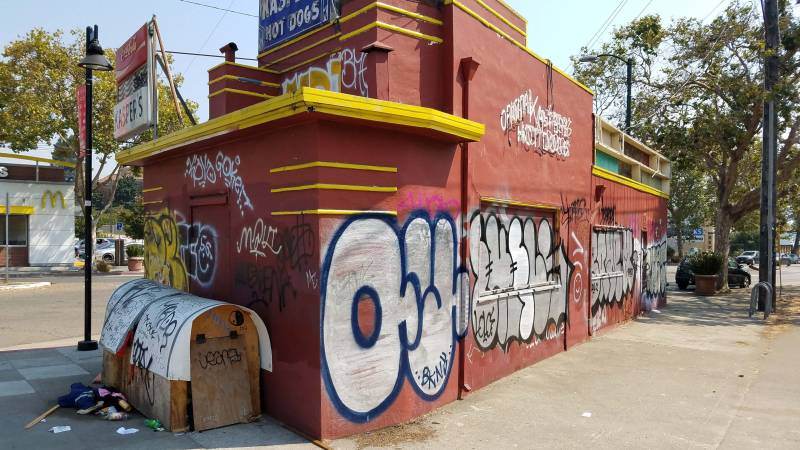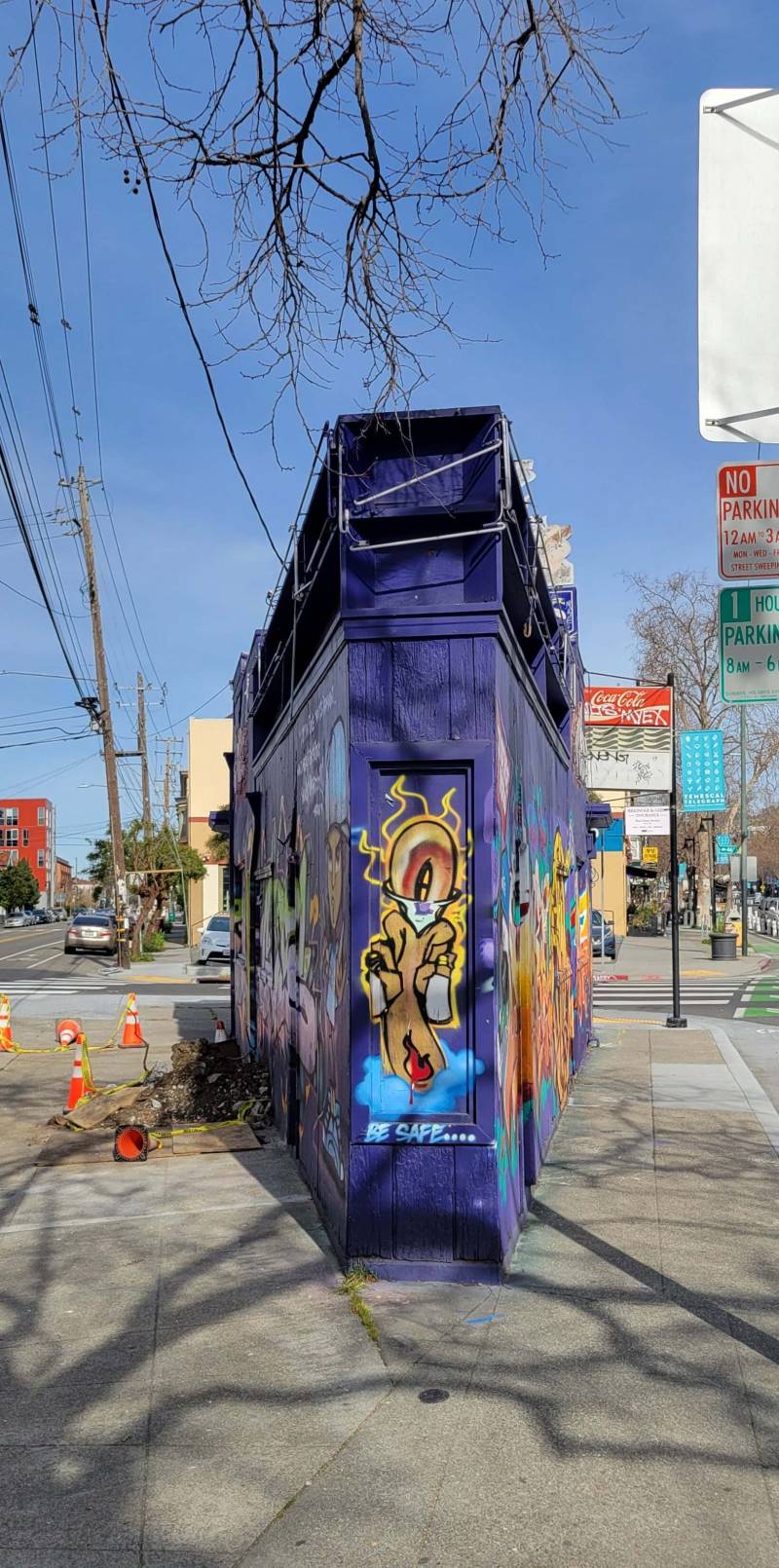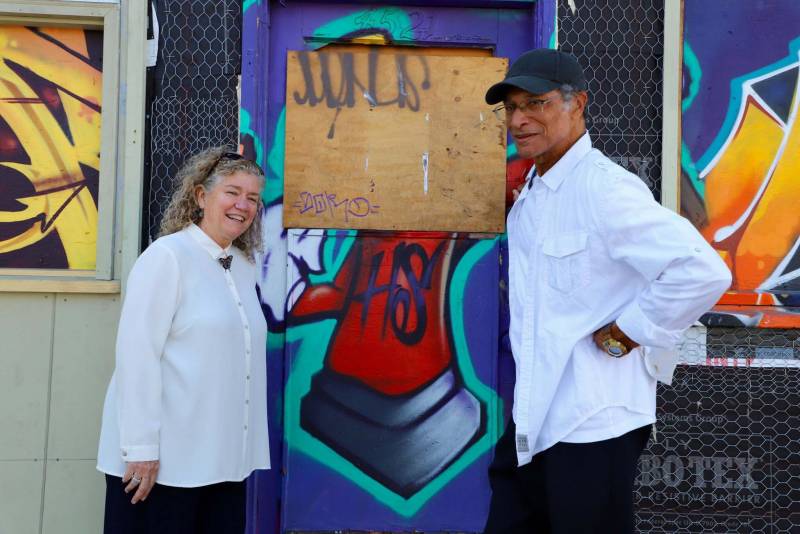There aren’t many old-school, immigrant-built, onion-slinging hot dog spots left in Oakland. But for anyone who grew up in the East Bay, Kasper’s (along with family rival business, Casper’s) has long been an unrivaled hot dog institution — rugged and reliable, like the blue-collar workers it has fed throughout the years.
And perhaps no other Kasper’s venue is as distinctly recognizable as the “Original Kasper’s” — a tiny, triangular outpost on 4521 Telegraph Ave. in Oakland.
Even though the Temescal location closed its doors in 2003, it has remained as an iconic reminder of the area’s food and architectural history. Indeed, the uniquely located and oddly undersized flatiron building — originally a gas station — has endured for nearly two decades without any indication of what would happen next.
During that time, graffiti artists have turned it into a de facto outdoor gallery, nearby high-rise apartments have multiplied around it and rent prices in the zip code have skyrocketed.
“The history of the building itself isn’t hard to find, but the mystery of why the owner let it sit there for 14 years was intriguing,” says Malcolm Ryder, a local photographer who has documented the building’s transformation since 2015. “As time went by, I paid more attention. The changes became the subject matter.”




